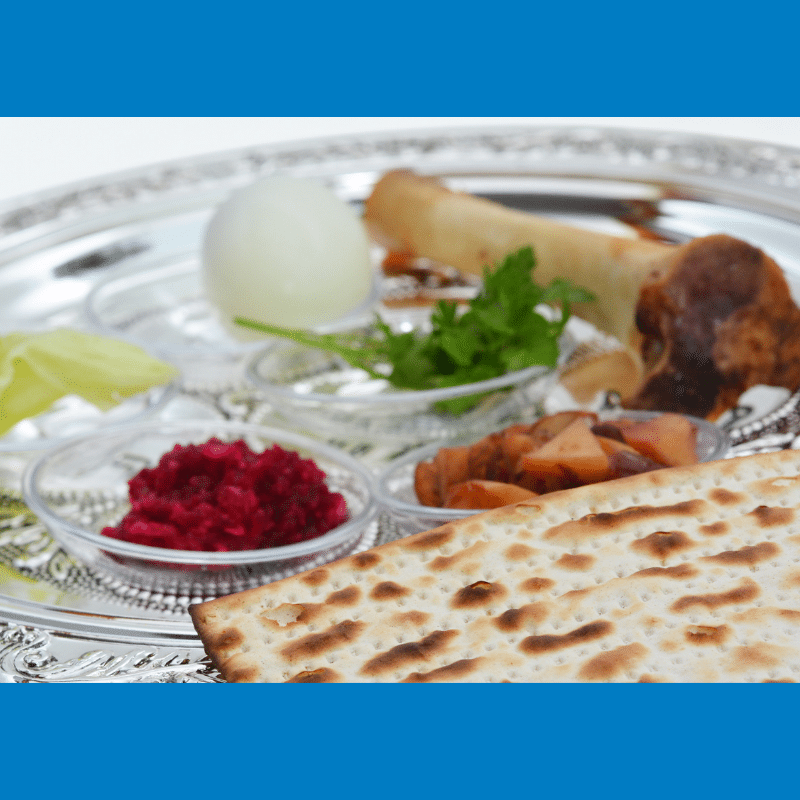Bringing Intention to Your Passover Planning
If the walls of matzah boxes at the supermarket are any indication, Passover is coming up very soon! In between the menu or travel planning and spring cleaning, taking the time now to bring intention to your seder (the ritual meal) and planning to create a fun and interactive experience that will make it accessible and meaningful to everyone.
Passover is inclusive by design: the values of inviting guests, providing a guidebook to the seder, and asking questions make it a great experience to share with those who are new to the celebration. Putting the spotlight on the youngest by giving them the important role of asking the Four Questions and involving all kids in finding the afikomen (the hidden piece of the middle matzah that is used in the conclusion of the seder) puts kids at the heart of this interactive, multi-sensory experience. Here are some questions to consider as you prepare for Passover. Discuss them with your partner and/or with your seder host if you are not hosting the meal yourself:
- How will you involve your children in preparing for Passover?
In addition to practicing the Four Questions when they’re old enough, kids can help with some steps of the recipes (e.g., for our littlest ones, rolling matzah balls for soup or smashing walnuts in a plastic bag for charoset), decorate placecards, search for the chametz (leavened products), and help set the table. Get more ideas - How will you involve children during the seder?
Can your kids be official greeters and coat-takers? Can they share a song they learned in school? Or maybe you have thespians in the family who can act out the Maggid (the story of Passover from Exodus)? - How can you help your guests feel welcome?
Can you send some resources in advance to help those who are new to Passover so they can be prepared? Can you ask your guests to bring something, either wine or a side dish or a question for the seder? - How can others help you?
This is important! Are there ways that your guests can help by lending chairs, bringing food, chopping veggies, or opening wine bottles? Many want to help, and while it’s sometimes easier to just do it yourself, having a ready list of tasks they can do will help them feel good and take some stress off you. - How will you tell the story of Passover?
You can read it straight from the Haggadah (the seder guidebook), but you could also add props or costumes, use a PJ Library book (like Let My People Go! which offers a Readers Theater version of the story), make it a musical (where the song moves the story forward), or other creative ideas.
These are just some questions to consider. We have resources to help answer them on our Jconnect Passover page, where you can find events, recipes, tips, books, and more to help your family celebrate.
Also, with the confluence of the start of Passover and Easter falling on the same weekend this year, it can be an especially tricky time for interfaith families. Check out these recommendations for interfaith families, which are based on my four decades of experience navigating being in an interfaith family, two decades as a Jewish educator, and 11 years as a parent.
Passover starts on Friday, April 15th at sundown.
Chag Pesach Sameach (Happy Passover holiday),
Sarah
Additional Resources
- PJ Library Passover Hub
-
The Pre-Seder Checklist Every Parent Needs (PJ Library)
-
At a Passover and Easter Impasse? Ideas for Interfaith Families (Here’s the Story blog | PJ Library in Greater Washington)
-
Ways to Celebrate Passover Throughout the Week While Safe at Home (Here’s the Story blog | PJ Library in Greater Washington)
- Teaching Kids to Say the Four Questions (PJ Library)
- Passover Tips for Interfaith Families (PJ Library)
- Passover Resources for Interfaith Families (18Doors)
- What Happens at a Seder guide (PJ Library)

